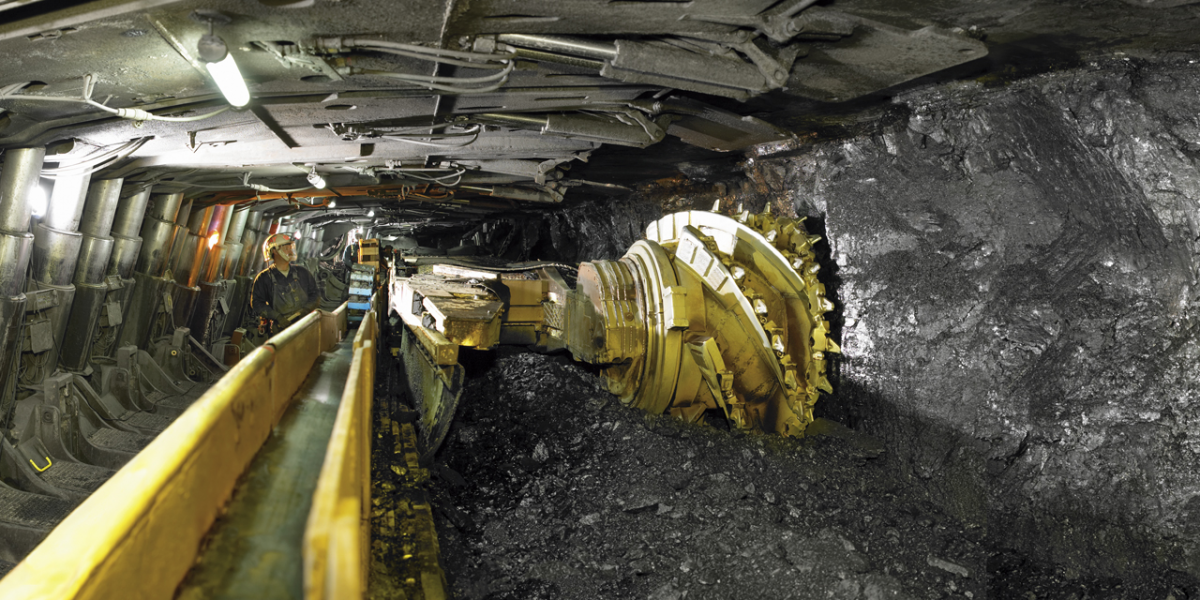What is Longwall Mining?
Longwall coal mining is a highly-productive method of extracting coal from underground mines. This method involves using a machine called a "longwall shearer," which is a large machine that cuts away a rectangular panel of coal in a single pass. As the machine advances, the panel of coal is cut away and transported to the surface. Longwall mining is seen as a safer and more efficient alternative to traditional "bord-and-pillar" methods of coal mining, which involve excavating rooms in the coal seam and leaving pillars of coal to support the roof. In this blog post, we'll take a closer look at longwall mining, including its history, the equipment used, and some of the innovative variations of the mining method adopted in the mining industry.

Overview
Longwall mining is a method of underground coal mining in which a long wall of coal is mined in a single slice, typically of thickness 0.5 to 1.5 meters (1.6 to 4.9 feet). The longwall panel is typically 3 to 4.5 kilometers (1.9 to 2.8 miles) long and 250 to 400 meters (820 to 1,310 feet) wide. Longwall mining is more efficient and less labour-intensive than traditional bord-and-pillar (also known as room-and-pillar) mining, in which coal is extracted in a series of blocks (or "pillars") separated by bords (or "rooms") of unmined coal.
Longwall Mining Equipment & Machinery
To perform longwall mining, a "longwall shearer" is used to cut and extract the coal from the seam. The machine consists of a shearing blade that cuts the coal from the face of the coal seam, as well as hydraulic jacks that support the roof of the mine as the coal is extracted. The coal that is cut is then loaded onto conveyors and transported out of the mine.
Advantages Over Bord-and-Pillar Mining
Longwall mining has several advantages over bord-and-pillar mining. It is more efficient, as it allows a larger area of the coal seam to be mined in a single slice, and it is less labor-intensive, as it requires fewer workers to operate the machinery. However, it can also be more dangerous, as the longwall miner machine and the roof supports are vulnerable to collapse if the roof of the mine is not properly supported.
Variations of Longwall Mining
Longwall Top Coal Caving (LTCC)
Longwall top coal caving (LTCC) is a mining method used in underground coal mining. It involves the use of a longwall mining machine, which cuts a long, horizontal section of the coal seam. As the machine moves forward, the roof above the cut collapses into the void left behind, caving the top coal onto the conveyor system and allowing it to be extracted.
This method is typically used in thick coal seams where the roof is unstable and would collapse without the support of the longwall machine. It allows for the efficient extraction of coal and can reduce the need for additional roof support measures.
Punch Longwall Mining
Punch longwall mining makes use of abandoned open cut mine strips by driving gateroads directly into the seam at the base of the highwall, with no requirement for main entries. The longwall is then retreated towards the open cut and recovered just short of the highwall, leaving a safe barrier pillar.
Punch longwall mining is a simple, highly-productive, and cost-effective coal mining method which has been adopted at mine sites where structural geological features, such as major thrust faults, pose too great a barrier for adopting conventional longwall mining. BHP's Broadmeadow Mine near Moranbah in Central Queensland's Bowen Basin is one of the only punch longwall mines in Australia.
BOXCUT
Get your mining services discovered by mining companies, faster.